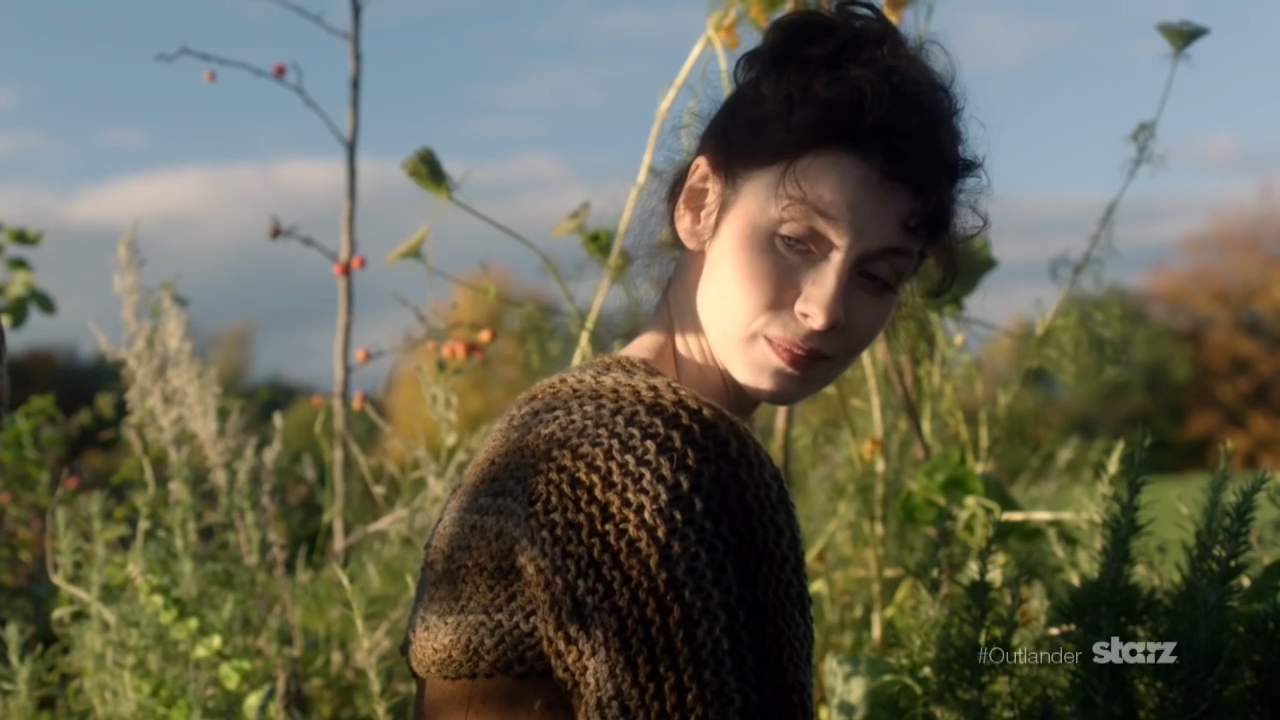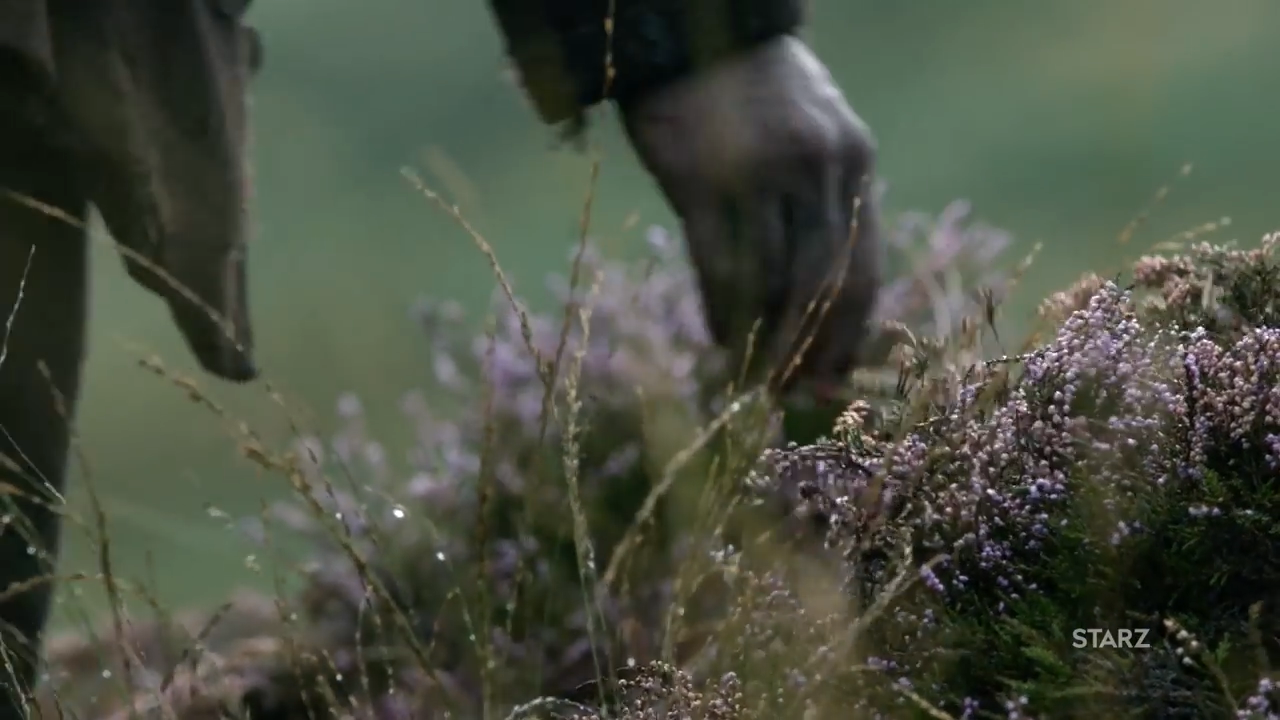
Discussing the Plants of Outlander with Diana Gabaldon
At last: #Droughtlander has its end in sight. Season 3 of the critically-acclaimed Outlander series is now underway, and this one promises even more adventure, romance, and devastating heartbreak than ever. Drawing on the events of the third book in the Outlander series, [easyazon_link identifier=”0440217563″ locale=”US” tag=”gardcoll03-20″]Voyager[/easyazon_link], the STARZ show picks up with Claire returning pregnant to Frank in 1948 and Jaime facing the aftermath of Culloden; separated by centuries, the two attempt to rebuild their own lives apart from from another. (Here’s your season 2 recap, if you need one.)

Steeped in carefully researched history, the Outlander series by Diana Gabaldon (on which the show is based) is filled with curious herbal remedies used by WWII nurse Claire– from angelica and anise for constipation to willowbark brewed as a painkiller. By applying her knowledge of 20th-century medicine to the foraged plants of Scotland and France, Claire earns a reputation for herself as a skilled healer (though, as fans of the books or show will remember, her prowess results in her being accused and tried for witchcraft). So thorough are the remedies that fansites have sprung up to document those that appear on the show, correlating them with official studies.
Curious about the research behind the many herbs and botanics that make their appearance through the novels and show, Garden Collage caught up with Gabaldon at the end of Season 2.
(Spoiler Alert: Gabaldon covers the events through [easyazon_link identifier=”110188424X” locale=”US” tag=”gardcoll03-20″]Written in My Own Heart’s Blood[/easyazon_link], the eighth book in the series. You have been warned.)
On Gabaldon’s botanical research and favorite remedy:
DG: “Anything [Claire] uses is from my research or personal (sometimes theoretical) knowledge– meaning only that at some time, someone used this, that or the other for the indicated condition, and said so in print.
“My current favorite of her medical procedures, though, is her treatment of Lord John Grey’s injured eye (in Written in My Own Heart’s Blood), where she dribbles honey around the eyeball in order to keep it moist, prevent infection (honey is very antibacterial), and prevent the muscles ‘freezing’ the eye in its socket by adhering to the surrounding bone during the healing process.”
On which of Claire’s herbal remedies she uses for herself:
DG: “I use peppermint for minor indigestion (it relaxes the smooth muscle of the digestive tract) and have a nice lavender salve (I don’t make it; I buy it) that’s good for minor skin abrasions and irritations, and I do use an aromatherapy lamp with essential oils while I’m writing now and then, but that’s about it, though I do grow a lot of cooking herbs.
“(There’s a reason why people use mixtures and medicines from a regular pharmacy, rather than brewing their own potions: modern compounds are standardized, with (generally) a much higher concentration of active ingredient than you could get even by intensive decoction. They’re also reliable in dose and effect, and generally free of contaminants. A good deal more convenient, too…)”

On the blurred lines between magic and medicine:
DG: “Claire doesn’t actually adhere to a belief system that recognizes magic, though she recognizes its power in those who do (witness her using the ‘seizure’ stone to comfort Mary MacNab about her son’s epilepsy—and her remarking (to herself) the antiquity of the stone and the universal power of belief to affect healing).
Not an attitude that would have been widely held in the 20th century, but that doesn’t mean it isn’t/wasn’t valid for any time– and she recognizes that. Using the power of a person’s own mind and body to heal them is a part of her art, and she also recognizes the power of prayer in herself– something you see more as she grows older and finds both comfort and confidence in it. But neither of these avenues are ‘magic’, per se.”
On making the calming scent of lavender one of the series’ more sinister scents:
DG: “Lavender has been a staple of gentlemen’s colognes since the Middle Ages, at least. Jack is a gentleman, and an officer; he comes from a social class where he would normally have scented linen, and lavender is the simplest single fragrance. He isn’t the sort of dandy who would be going in for very expensive blended scents like bergamot and vetiver, though.
“At the same time, lavender is an important healing herb; it’s used to relieve headache (and other minor pain), to heal minor skin wounds and abrasions, and has other (sometimes) less orthodox uses (I have an interesting recipe for chicken stewed with apricots and lavender (very good) and have eaten lavender chocolate on occasion—it’s not that great). But the point is, it’s a staple herb that any housewife– let alone a professional healer or herbalist– might have on hand. Claire obviously uses it commonly, too.
“So the lavender is one of those common points where Claire and Jack intersect for Jamie– the connection between sex and violence is another. (I.e., she can only rescue his soul from the destruction of Wentworth by approaching him through a potentially violent sexual connection and letting him reclaim his manhood by the same avenue through which it was taken from him. And the lavender is the sensual trigger for his memory of both torturer and lover, giving him a place from which he can ‘see’ both at the same time, and choose his path.)”

On her relationship to nature, prior to Outlander:
DG: “I’ve always had a great affinity for, and curiosity about nature in general, and I’m sure that’s reflected in the books, but not in what you might call a conscious way. It’s more just a pervasive sense of nature, because you’re seeing the environment through the eyes of people who are close to nature by necessity, not choice, and thus acute observers of it.”
On her own garden:
DG: “Mind you, I live in a desert, so my growing season is essentially from the end of January to mid-May. After that, everything just fries to the ground. That being so, I normally grow salad crops and herbs (some of the herbs I can keep going over the hot summer; I have rosemary and sage all year, and five or six kinds of mint). I also have roses, grapevines and pomegranates (I have a huge pomegranate tree that regularly yields 300-400 fruits a year), and we have a small citrus grove: sweet oranges, grapefruits, tangelos and Mexican limes. Those things grow all year, as long as you give them enough water.”
And last, her travel tips for anyone visiting Scotland:
DG: “What one would like to see in Scotland depends what you’re looking for; for history, start with Edinburgh (but don’t forget Glasgow, which is much more modern, but very vibrant). For Highland landscapes, stay in Inverness and take day-trips. Not a bad idea to hire a good guide– I can recommend Hugh Allison (his tours are listed on my webpage, along with a few others who take group tours– Judy Lowstuter’s Celtic Journeys Company seems very good; I’ve heard from numerous people who’ve gone with her and had a wonderful time)– though it’s quite easy to navigate the Highlands if you choose to drive yourself. And well worth it to go over the sea to Skye…(you can drive across a bridge to get there, but there’s also a ferry).”
Season 3 of Outlander is out now.
Looking for other dramatic, entertaining reads? Check out our summer reading guide.

































